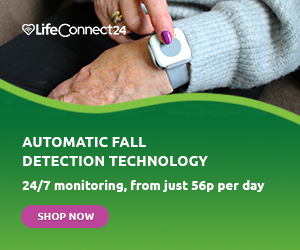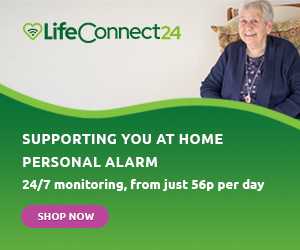Epilepsy is a condition that affects more than 600,000 people in the UK. That comes to around 1 in every 100 people. It is a condition that involves sudden electrical signals in the brain that cause disruption. This results in a seizure. You can find more information on epilepsy by reading our useful guide. In this article, we will focus on common treatments for the condition that can make it easier to live with epilepsy.
Common Treatments for Epilepsy
The most common treatment for epilepsy is medication in the form of anti-epileptic drugs (AEDs). AEDs can’t cure epilepsy but can prevent or limit seizures by altering levels of chemicals in the brain to control abnormal spurts of electrical activity. According to the Epilepsy Society, about 70% of people with epilepsy benefit from AEDs.
In 2017, the International League Against Epilepsy (ILAE) introduced a new method of categorising seizures. The goal was to help doctors prescribe the most appropriate AEDs. The ILAE divided seizures into three groups, based on:
- Where they start in the brain.
- Whether awareness is impaired.
- Whether other symptoms are involved.
When seizures can’t be controlled with anti-epileptic drugs, further options are available. Common treatments for epilepsy in these cases include:
- Nerve stimulation.
- Deep brain stimulation.
In the most severe cases, part of the brain may be removed to stop seizures.
What are Anti-Epileptic Drugs?
Anti-epileptic medication can be prescribed as:
- Tablets.
- Capsules.
- Liquids.
- Syrups.
AEDs usually need to be taken every day.
Types of AEDs
There are many kinds of anti-epileptic drugs, prescribed according to the type of seizure. Common AEDs include:
- Lamotrigine (marketed as Lamitcal).
- Levetiracetam (Keppra and Desitrend).
- Sodium valproate (brands including Epilim, Epival and Episenta).
- Carbamazepine (Carbagen and Tegretol).
- Oxcarbazepine (Trileptal).
- Topiramate (Topamax).
Low doses are prescribed initially and slowly increased until the seizures stop or diminish. If the first type of AED doesn’t work, another will be recommended.
If you haven’t had a seizure for a few years, you might be able to stop AED treatment. Your doctor will reduce the dose gradually over time – if you suddenly stop taking an anti-epileptic drug, it can result in another seizure.
Vagus Nerve Stimulation
Vagus nerve stimulation (VNS) is a relatively simple surgical procedure to treat epilepsy.
A pulse generator, similar to a pacemaker, is placed under the skin of the chest and connected to the vagus nerve on the left of the neck. Mild electrical pulses can then be directed to where seizures are believed to originate in the brain. This adjusts irregular electrical activity.
Although VNS is unlikely to stop seizures, it can reduce their number, length, and severity. It can take up to two years to become effective and is used in combination with – not instead of – anti-epileptic drugs. However, if vagus nerve stimulation works, AEDs may be reduced over time.
Deep Brain Stimulation
Similar to VNS, deep brain stimulation (DBS) entails minimally-invasive surgery to embed an implant in the chest. However, DBS bypasses the vagus nerve and sends electrical signals directly to electrodes placed deep in the brain, in areas that control body movement.
Deep brain stimulation is a relatively new treatment for epilepsy. Trials show that for some people it greatly reduces the number of seizures. For others, it is less beneficial or has no effect.
Brain Surgery to Treat Epilepsy
Surgery to remove part of the brain may be an option for epileptic treatment if:
- Anti-epileptic drugs aren’t working or have little effect.
- Your seizures are caused by a problem in a small part of your brain that can be removed with minimal risk.
After brain surgery, epileptic seizures typically stop completely. However, they may not stop immediately, so you might need to keep taking AEDs for a year or two.
Ketogenic Diet for Epilepsy
A further option when drugs prove ineffective in preventing epileptic seizures is a ketogenic diet. The keto diet is a low-carbohydrate, high-fat, protein-controlled diet. It’s been used since the 1920s to treat epilepsy, originally in children.
A ketogenic diet adapts your body to burn fat as its main fuel, instead of sugar. It can help to lessen the number or severity of seizures and can also help patients by boosting energy levels and increasing alertness once they get used to the diet.
The NHS says the keto diet isn’t now widely used for adults with epilepsy because of health concerns about the high-fat element. On the other hand, the Epilepsy Society say that the diet can be beneficial as a treatment for epilepsy when supervised by medical specialists.
Living with Epilepsy as You Get Older
According to Epilepsy Action – aka the British Epilepsy Association – 25% of people diagnosed are over 65. Other older people with epilepsy will have been living with the chronic condition for years, or even from childhood. In most cases, epilepsy is a life-long problem.
Coping with epilepsy in later life presents its own challenges, particularly if you live alone and want to maintain your independence.
Although losing consciousness and collapsing to the ground is a rare type of seizure among older people, some medications can have side effects such as dizziness or nausea. This increases the risk of a tumble. In these situations, a fall detector can be crucial in raising the alarm to ensure you get help.
The effectiveness of treatments vary from one individual to another, just as epilepsy affects people in different ways.
Some things that trigger seizures can be avoided. These include:
- Flashing lights.
- Alcohol.
- Illegal drugs.
You can learn more about epilepsy by reading our in-depth guide.
Personal Alarm Information
If you have epilepsy we would recommend joining our personal alarm service, and even upgrading to our fall detector plan. A fall detector automatically raises an alarm call with our Response Team if it detects sudden and drastic movement (a fall for example) from the user.
For more information please call our team on 0800 999 0400. Alternatively, complete our contact us form and we will get back to you as soon as possible.
Editor’s Note: This article was updated on 18th April 2022 to reflect current information.



Leave A Comment